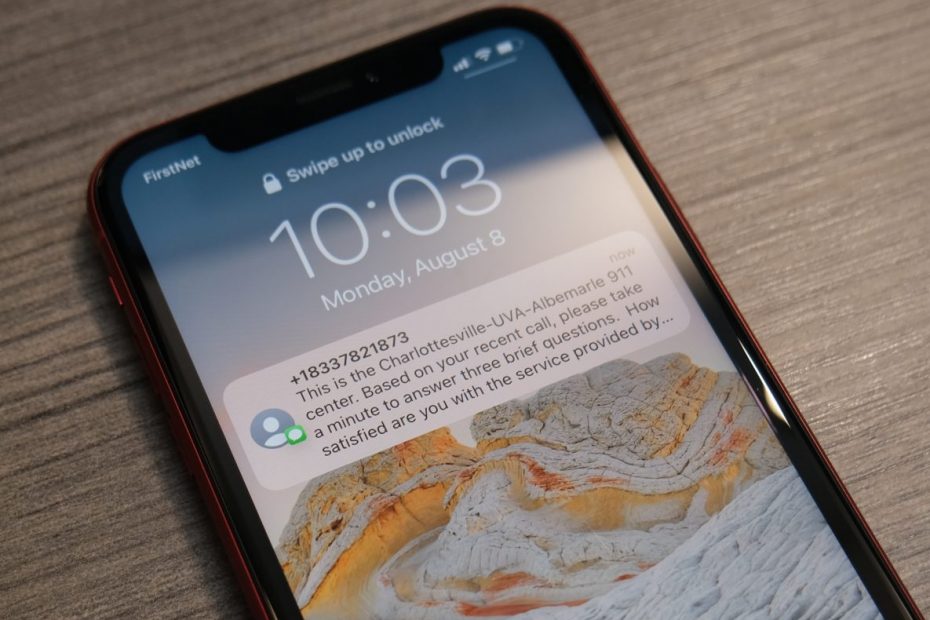FOR IMMEDIATE RELEASE
Real-time video has now joined 9-1-1 telephone calls and text-to-911 as the newest way residents and visitors in the Charlottesville/Albemarle region can request assistance in an emergency. A host of technological upgrades – including video, SMS-based surveys, new telephone equipment, and automated alarm monitoring – have been implemented to support the ECC’s first, first responders in providing the quickest and best possible 9-1-1 service.
Video and Enhanced Location
The Charlottesville-UVA-Albemarle Emergency Communications Center is one of the first public safety answering points (PSAPs) in Virginia to enable real-time video from mobile devices – a next-generation 9-1-1 technology. Carbyne software allows the Public Safety Communications Officers to send a link to a caller’s phone that enables the ECC to see what is happening on the other end of the line and to use the device’s location services to better pinpoint the location of the emergency. The utility of this capability was immediately clear during initial testing, with ECC Operations Manager Todd Richardson saying of a recent call, “Carbyne’s location breadcrumbs were instrumental in helping responders to locate a hiker who had become lost in the woods off of a remote trail with limited communications capability.”
This technology furthermore supports the ECC in realizing its commitment to universal accessibility. Carbyne’s video and silent chat features join existing text-to-911, language interpretation, TTY/TDD, and sign-language relay services. Together, these functionalities help to ensure that anyone experiencing an emergency can get the help they need.
Community Feedback
PowerEngage software provides a new mechanism for the ECC to collect continuous feedback and to identify opportunities to improve the caller’s customer service experience. Short surveys will be sent by text message after 9-1-1 calls for low-acuity events, allowing callers to easily provide input and/or request follow-up. Sonny Saxton, Executive Director of the ECC, said, “While we’ve previously used mailed surveys, this will allow us to hear more immediate feedback and respond quicker to the needs of our community. We’re also very excited to share this feedback with our Communications Officers, so they can more readily see and hear the community’s appreciation for the vital, life-saving work that they do.”
Telephone Equipment
The ECC, supported by its regional partners and by approximately $150,000 in grant funding from the Commonwealth of Virginia, is investing over $600,000 in upgrades to call-handling equipment. This new equipment was required to meet state and federal NG9-1-1 standards and replaces decades-old, end-of-life technology to improve reliability and functionality of core 9-1-1 telephone systems. Lily Gregg, ECC Systems Manager, said, “The new software and hardware will give us much more precise location information for routing 9-1-1 calls. We will no longer have to work with location data based on the cell phone tower you’re pinging but can use your actual device location. This ensures the right emergency communications center receives the call.”
Alarm Monitoring
The ECC became one of the first hundred PSAPs in the country to implement the Automated Secure Alarm Protocol (ASAP), or ASAP to PSAP. This system enables automated communication between alarm companies and the 9-1-1 center, allowing telephone lines to stay open for other emergencies and decreasing the time it takes to process in-progress alarm calls and dispatch field responders to the scene. The system went live with alerts from Vector Security, Rapid Response Monitoring, Security Central, CPI Security, Securitas, Tyco (Johnson Controls), Richmond Alarm, Wegmans Security, Guardian Protection, Affiliated Monitoring, Stanley Security, National Monitoring Center, Brinks Home Security, Vivint, United Central Control, Protection One, and ADT.
###
